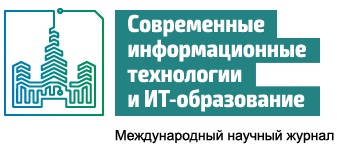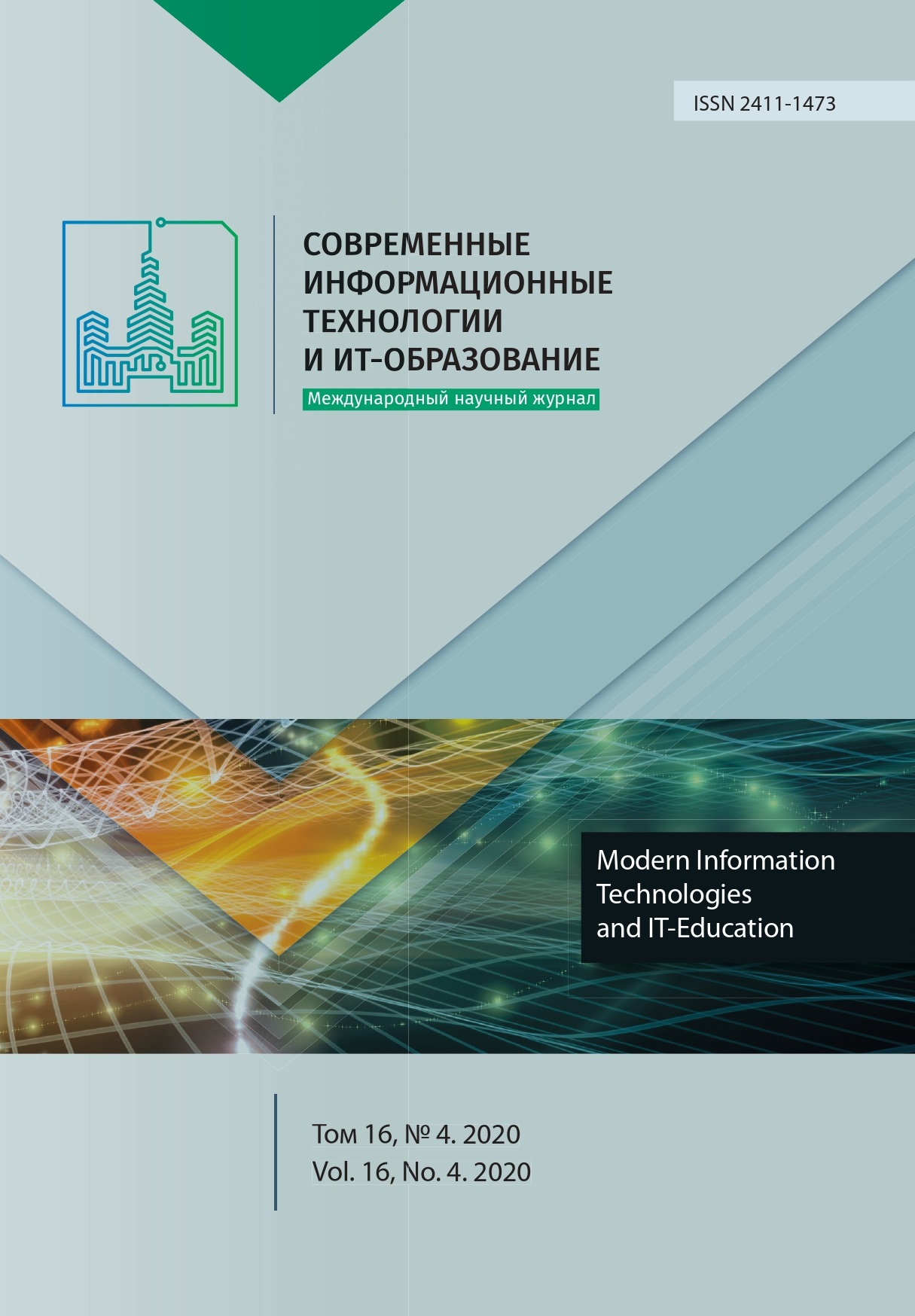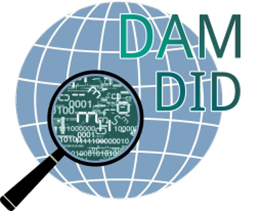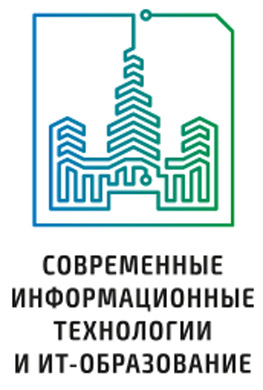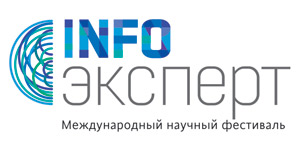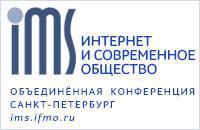Визуализация графа зависимостей терминов в учебном материале
Аннотация
В статье рассматривается проблема создания учебных курсов. У преподавателя при построении курса периодически возникает необходимость в инструментах визуализации структуры будущего курса. Нет исчерпывающих инструментов для выделения системы понятий, ее систематизации и структуризации, на основе которой будет построен будущий курс. Выбор системы понятий и способов ее представления зависит от временных рамок курса, познавательных возможностей учащихся и имеющихся у них знаний. Но при этом в российской системе образования нет качественных инструментов для системного анализа учебного курса. В процессе разработки учебного курса возникает необходимость в использовании средства и методов для анализа учебного материала. Одним из таких методов выступает представление системы понятий учебного материала в виде ацикличного ориентированного графа.
Визуализация графа зависимостей терминов в учебном материале позволяет качественнее проанализировать материал, подготавливаемый как содержание для будущего курса. Помогает провести определение основного и второстепенного содержания учебного курса, выделить акценты на важным к изучению понятиям и грамотно определить порядок изучаемых тем. Появляется возможность, на базе одного и того же учебного материала разрабатывать несколько курсов с разным смежным содержанием или уровнем подготовки.
Литература
[2] Uvarov A.Yu. et al. Cifrovye tehnologii v rossijskom obrazovanii: istoricheskij obzor [Digital technologies in Russian education: a historical overview]. In: Dvoretskaya I.V. (ed.) Proceedings of the Second Russia-China Education Research Conference – Digital Transformation of Education and Artificial Intelligence. HSE University Publ., Moscow; 2019. p. 15-32. Available at: https://aiedu.hse.ru/mirror/pubs/share/308201188 (accessed 26.10.2020). (In Russ.)
[3] Levchenko I.V., Sadykova A.R. Approaches to solving the problem of search of scenarios of lessons on informatics for basic school in the Moscow E-School library. RUDN Journal of Informatization in Education. 2019; 16(3):231-242. (In Russ., abstract in Eng.) DOI: http://dx.doi.org/10.22363/2312- 8631-2019-16-3-231-242
[4] Zaslavskaya O.Yu. Organization of interaction between the teacher and students in the preparation for the creation and use of electronic educational materials. RUDN Journal of Informatization in Education. 2018; 15(4):351-362. (In Russ., abstract in Eng.) DOI: https://doi.org/10.22363/2312-8631-2018-15-4-351-362
[5] Titova S.V. Mobile testing apps for assessment and evaluation in language classroom. The Bulletin of Moscow University. Series 19. Linguistics and Cross-Cultural Communication. 2017; (1):24-34. Available at: https://elibrary.ru/item.asp?id=28794077 (accessed 26.10.2020). (In Russ., abstract in Eng.)
[6] Krasilnikova L.V., Vyalova N.V. Use of computer games in the development of speech of children of preschool age. Perspectives of Science and Education. 2018; (3):217-225. Available at: https://elibrary.ru/item.asp?id=35204121 (accessed 26.10.2020). (In Russ., abstract in Eng.)
[7] Gein A.G., Nekrasov V.P. Construction of the innovative educational course model. Bulletin of the Ural Institute of Economics, Management and Law. 2013; (2):80-86. Available at: https://elibrary.ru/item.asp?id=21128733 (accessed 26.10.2020). (In Russ., abstract in Eng.)
[8] Panichev S.A. Matematicheskie struktury kak osnova postroenija estestvenno-nauchnyh uchebnyh kursov [Mathematical structures as the basis for the construction of natural science training courses]. Obrazovanie i nauka. Izvestija Ural'skogo otdelenija Rossijskoj Akademii obrazovanija. 2004; (5):108-112. Available at: https://elibrary.ru/item.asp?id=18269795 (accessed 26.10.2020). (In Russ.)
[9] Kasyanov V.N., Evstigneev V.A. Graphy v programmirovanii: obrabotka, vizualizaciya i primenenie [Graphs in Programming: Processing, Visualization and Application]. SPb., BHVPeterburg Publ.; 2003. (In Russ.)
[10] Wilson R.J. Introduction to Graph Theory. 4th Edition. Addison Wesley; 1996. (In Eng.)
[11] Kasyanov V.N., Kasyanova E.V. Information visualization on the base of graph models. Scientific Visualization. 2014; 6(1):31-50. Available at: https://elibrary.ru/item.asp?id=21531384 (accessed 26.10.2020). (In Russ., abstract in Eng.)
[12] Konnov I.V., Kashina O.A., Gilmanova E.I. Solution of clusterization problem by graph optimization methods. Uchenye Zapiski Kazanskogo Universiteta. Seriya Fiziko-Matematicheskie Nauki. 2019; 161(3):423-437. (In Russ., abstract in Eng.) DOI: https://doi.org/10.26907/2541-7746.2019.3.423-437
[13] Il'ev A.V., Il'ev V.P. On a semi-superwized graph clustering problem. Applied Discrete Mathematics. 2018; 42(5):66-76. (In Russ., abstract in Eng.) DOI: https://doi.org/10.17223/20710410/42/5
[14] Khadiev K.R., Safina L.I. Quantum Algorithm for Shortest Path Search in Directed Acyclic Graph#. Moscow University Computational Mathematics and Cybernetics. 2019; 43(1):47-51. (In Eng.) DOI: https://doi.org/10.3103/S0278641919010023
[15] Herman I., Melancon G., Marshall M.S. Graph visualization and navigation in information visualization: A survey. IEEE Transactions on Visualization and Computer Graphics. 2000; 6(1):24-43. (In Eng.) DOI: https://doi.org/10.1109/2945.841119
[16] Kasyanov V.N., Evstigneev V.A. Graph Theory for Programmers: Algorithms for Processing Trees. Mathematics and Its Applications, vol. 515. Springer Netherlands; 2000. (In Eng.)
[17] Kasyanov V.N., Kasyanova E.V. Graph- and Cloud-Based Tools for Computer Science Education. In: Boumerdassi S., Bouzefrane S., Renault É. (ed.) Mobile, Secure, and Programmable Networking. MSPN 2015. Lecture Notes in Computer Science. 2015; 9395:41-54. Springer, Cham. (In Eng.) DOI: https://doi.org/10.1007/978-3-319-25744-0_4
[18] Batura T.V. Semantic analysis and methods of text meaning representation in computer linguistics. Software & Systems. 2016; 29(4):45-57. (In Russ., abstract in Eng.) DOI: https://doi.org/10.15827/0236-235X.116.045-057
[19] Mozgovoy M.V. Semantical Analyzer and the Problem of Text Retrieval. Vestnik of Saint Petersburg University. Applied Mathematics. Computer Science. Control Processes. 2005; (3):54-59. Available at: https://elibrary.ru/item.asp?id=21099040 (accessed 26.10.2020). (In Russ., abstract in Eng.)
[20] Cheremisinov D.I. The deterministic semantic of the regular expressions. Educational Resources and Technologies. 2016; (2):379-386. Available at: https://elibrary.ru/item.asp?id=26159783 (accessed 26.10.2020). (In Russ., abstract in Eng.)
[21] Ustalov D.A., Goldstein M.L. A distributed dictionary - based morphological analysis framework for Russian language processing. Bulletin of the South Ural State University. Series: Mathematical Modelling, Programming & Computer Software. 2012; (27):119-127. Available at: https://elibrary.ru/item.asp?id=17914850 (accessed 26.10.2020). (In Russ., abstract in Eng.)
[22] Boyarsky K.K., Kanevsky E.A. SemSin Semantic and Syntactic Parser. Scientific and Technical Journal of Information Technologies, Mechanics and Optics. 2015; 15(5):869-875. (In Russ., abstract in Eng.) DOI: https://doi.org/10.17586/2226-1494-2015-15-5-869-876
[23] Malikov A.V., Parkhomenko D.K., Gulevskiy Yu.V. Interface between the database, containing hierarchical structure and the end-user software. Bulletin of Higher Educational Institutions. North Caucasus Region. Technical Sciences. 2009; (3):19-24. Available at: https://elibrary.ru/item.asp?id=12906253 (accessed 26.10.2020). (In Russ., abstract in Eng.)
[24] Brath R., Banissi E. Font attributes enrich knowledge maps and information retrieval. International Journal on Digital Libraries. 2017; 18(1):5-24. (In Eng.) DOI: https://doi.org/10.1007/s00799-016-0168-4
[25] Ustalov D.A., Sozykin A.V. A Software System for Automatic Construction of a Semantic Word Network. Bulletin of the South Ural State University. Series: Computational Mathematics and Software Engineering. 2017; 6(2):69-83. (In Russ., abstract in Eng.) DOI: https://doi.org/10.14529/cmse170205

Это произведение доступно по лицензии Creative Commons «Attribution» («Атрибуция») 4.0 Всемирная.
Редакционная политика журнала основывается на традиционных этических принципах российской научной периодики и строится с учетом этических норм работы редакторов и издателей, закрепленных в Кодексе поведения и руководящих принципах наилучшей практики для редактора журнала (Code of Conduct and Best Practice Guidelines for Journal Editors) и Кодексе поведения для издателя журнала (Code of Conduct for Journal Publishers), разработанных Комитетом по публикационной этике - Committee on Publication Ethics (COPE). В процессе издательской деятельности редколлегия журнала руководствуется международными правилами охраны авторского права, нормами действующего законодательства РФ, международными издательскими стандартами и обязательной ссылке на первоисточник.
Журнал позволяет авторам сохранять авторское право без ограничений. Журнал позволяет авторам сохранить права на публикацию без ограничений.
Издательская политика в области авторского права и архивирования определяются «зеленым цветом» в базе данных SHERPA/RoMEO.
Все статьи распространяются на условиях лицензии Creative Commons «Attribution» («Атрибуция») 4.0 Всемирная, которая позволяет другим использовать, распространять, дополнять эту работу с обязательной ссылкой на оригинальную работу и публикацию в этом журналe.
